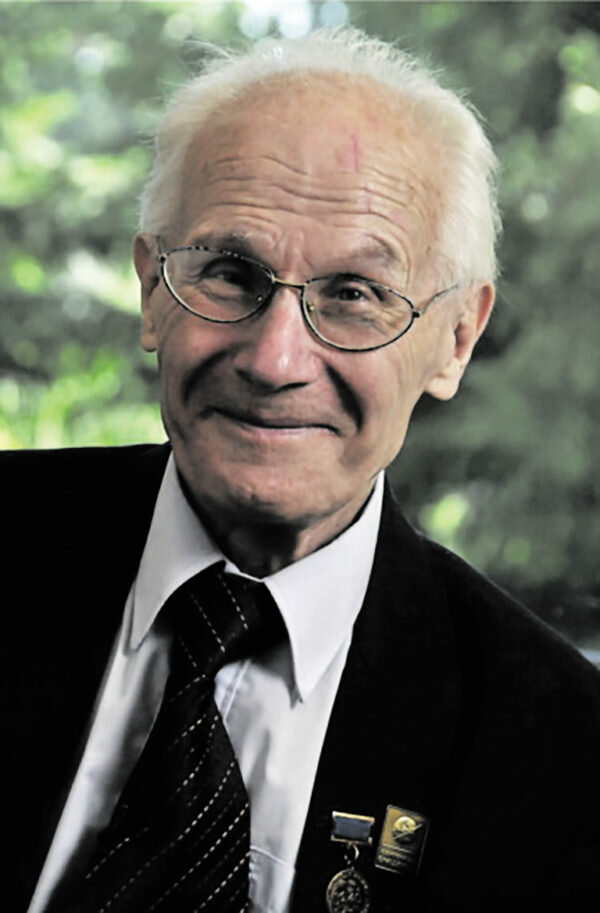When I became the smallest boss in the newspaper, my then editor-in-chief, a lady who became the seasoned wolf of journalism in Soviet times, told me: “Remember, since you started to grow, managing any media project is like running along a minefield. Not because it is dangerous, but because it is unpredictable. We are dealing with information, but it is impossible to calculate and manage it. Therefore, all the editor-in-chiefs are fleeing, but none of us knows when and on what exactly he will be blown up. ”
Then I did not understand it, but then, when I, like that Pinocchio, grew up, learned and bought a thousand new jackets ... In general, having learned a little bit about the history of Russian journalism, I was convinced that the thesis was absolutely correct. How many times are media managers - even great media managers! - Finished their career by a completely unimaginable combination of circumstances, which it was decidedly impossible to predict.
I won’t tell now how the editor-in-chief of Vesyolny Pictures and the great illustrator Ivan Semenov almost burned himself in insects - in the truest sense of the word. This is still more of a Friday story. But I’ll tell a story about the great and terrible Vasily Zakharchenko, especially since it is quite according to the profile of Habr.
In the Soviet journal "Technology - Youth" they loved science and science fiction very much. Therefore, often combined, publishing science fiction in the journal.
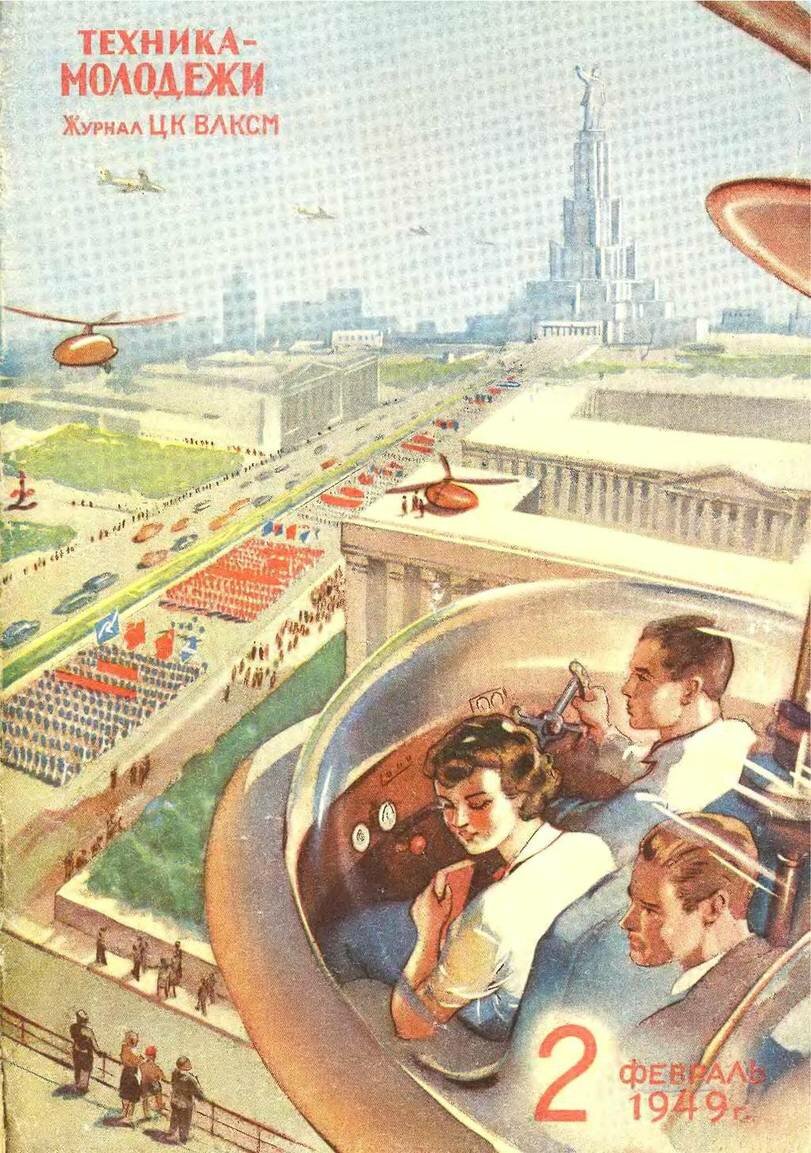
For many, many years, from 1949 to 1984, the magazine was run by the legendary editor Vasily Dmitrievich Zakharchenko, who, in fact, made of it the “Technique for Youth” that thundered throughout the country, became the legend of Soviet journalism and was a lot to enter. Due to the latter circumstance periodically, “Technique - Youth” succeeded in what few people succeeded in publishing modern Anglo-American science fiction writers.
No, modern Anglo-American science fiction writers in the USSR both translated and published. But in periodicals - quite rarely.
Why?
Because it is a huge audience. These are outrageous circulations even by Soviet standards. “Technique for Youth”, for example, came out with a circulation of 1.7 million copies.
But, as I said, sometimes it was possible. So, almost the whole of 1980, happy science fiction lovers read Arthur Clarke's novel Fountains of Paradise in the magazine.

Arthur Clark was considered a friend of the Soviet country, visited us, visited Star City, met and corresponded with cosmonaut Alexei Leonov. As for the novel “Fountains of Paradise”, Clark never hid the fact that in the novel he used the idea of a “space elevator”, first put forward by the designer from Leningrad, Yuri Artsutanov.
After the publication of "Fountains ..." Arthur Clark visited the USSR in 1982, where, in particular, he met with Leonov, Zakharchenko, and Artsutanov.
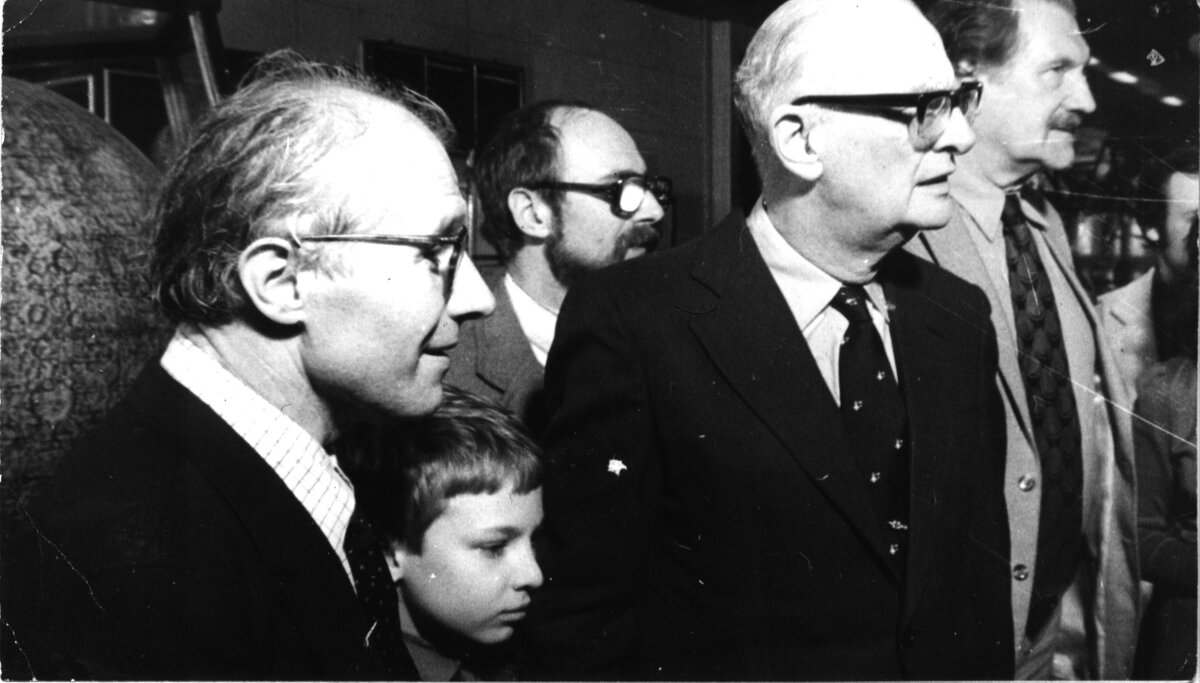 Yuri Artsutanov and Arthur Clark visit the Museum of Cosmonautics and Rocket Technology in Leningrad
Yuri Artsutanov and Arthur Clark visit the Museum of Cosmonautics and Rocket Technology in LeningradAnd following the results of this visit in 1984, Zakharchenko managed to push through the publication in Technique - Youth of another novel by the world-famous science fiction writer entitled 2010: Odyssey Two. This was a continuation of his famous book 2001: A Space Odyssey, based on the script of the cult film Stanley Kubrick.

To a large extent, this was helped by the fact that in the second book there was a lot of Soviet. The plot was based on the fact that the Alexei Leonov spacecraft with the Soviet-American crew on board goes to Jupiter to unravel the mystery of the Discovery spacecraft left in the first book in Jupiter’s orbit.
True, Clark had a dedication on the first page:
Two great Russians: General A. A. Leonov, an astronaut, Hero of the Soviet Union, artist and academician A. D. Sakharov, a scientist, Nobel Prize laureate, humanist.
But initiation, you know, was thrown out in the magazine. Even without any brief struggle.
The first issue came out safely, the second came after it, and the readers were already looking forward to a long leisurely reading - as in 1980.

But in the third issue there was no continuation. The people got excited, but then decided - you never know. In the fourth, everything will probably be fine.
But in the fourth issue there was something incredible - a miserable, crumpled in three paragraphs retelling of the further content of the novel.

“Doctor, what was that ?!
Is that what I’m selling ?! ”readers of“ Technics - Youth ”goggled. But the answer became known only after perestroika.
As it turned out, shortly after the publication of the Technique - Youth publication in the International Herald of the Tribunes newspaper, an article was published entitled "COSMONAUTS - DISSIDENTS" THANKS TO CENSORS ON A FLIGHT ON THE PAGES OF THE SOVIET JOURNAL.
S. Sobolev in his
investigation cites the full text of this note. It specifically states:
Soviet dissidents, who rarely manage to laugh in this solemnly formal country, today can giggle at a joke played by famous British science fiction writer Arthur Clark with government censors. This apparent joke - “a small but elegant Trojan horse”, as one of the dissidents christened it, is enclosed in the novel by A. Clark “2010: The Second Odyssey.” <...>
The names of all the fictional cosmonauts in the novel actually correspond to the names of famous dissidents. <...> In the book there are no political differences between the characters - Russian. Nevertheless, the astronauts are namesakes:
- Victor Brailovsky, a computer specialist, one of the leading Jewish activists, who is due to be released this month after three years of exile in Central Asia;
- Ivan Kovalev - engineer and founder of the currently disbanded Helsinki Human Rights Monitoring Team. He is serving a seven-year sentence in a labor camp;
- Anatoly Marchenko, a forty-six-year-old worker who spent 18 years in the camps for political speeches, and is currently serving a term that ends in 1996;
- Yuri Orlov, a Jewish activist and one of the founders of the Helsinki Group. The famous physicist Orlov completed last month a seven-year sentence in a labor camp and is serving an additional five-year sentence in a Siberian exile,
- Leonid Ternovsky - a physicist who founded the Helsinki Group in Moscow in 1976. He served a three-year sentence in a camp;
- Mikola Rudenko - one of the founders of the Helsinki Group in Ukraine, who, after seven years in prison, should be released this month and sent to the settlement;
- Gleb Yakunin, a priest of the Russian Orthodox Church, convicted in 1980 of five years of camp work and another five years of settlement on charges of anti-Soviet propaganda and agitation.

Why Clark so set up Zakharchenko, with whom, if he had not been friends for many years, he was in excellent relations - I don’t understand very well. Fans of the writer even came up with a witty explanation that Clark was not to blame, the same principle worked that gave rise to General Gogol and General Pushkin in the "Bond". Fantast, they say, without a second thought, used Russian surnames that were widely heard in the Western press - we, they say, were also the best Americans who knew Angela Davis and Leonard Peltier best of all. It is believed, however, with difficulty - it hurts too uniform selection.
Well, in “Technique - Youth”, you yourself understand what started. As the then respondent recalled, and later - the editor-in-chief of the magazine, Alexander Perevozchikov:
Prior to this episode, our editor Vasily Dmitrievich Zakharchenko was included in the highest offices. But after Clark's attitude towards him changed dramatically. He, who had just received the next Lenin Komsomol prize, was literally eaten, smeared on the wall. And our magazine was almost on the verge of destruction. Nevertheless, it was not our puncture, but Glavlita. They should have kept track and prompted. Thus, we were able to publish only two of the fifteen chapters. The remaining thirteen chapters went out. On the page of the printed text, I retold what will happen to Clark later. But the brutal Glavlit made me cut the retelling by another three times. We printed the Odyssey in full much later.
Indeed, Zakharchenko wrote an explanatory note to the Komsomol Central Committee, where he "disarmed himself before the party." According to the editor-in-chief, the
“two-faced” Clark
“in a vile way” gave the crew of Soviet cosmonauts
“the names of a group of anti-Soviet-minded elements who were prosecuted for hostile actions” . The editor-in-chief admitted that he had lost his vigilance and promised to correct the mistake.
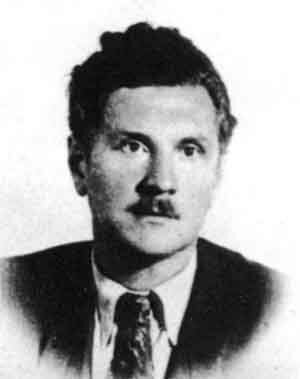 Vasily Zakharchenko
Vasily ZakharchenkoDid not help. The magazine was not closed, but “shaken up” thoroughly. Two weeks after the revelatory western article, Zakharchenko was dismissed; a number of senior members of the magazine received penalties of varying severity. Zakharchenko, in addition, became a “leper” - his exit visa was canceled, he was expelled from the editorial boards of Children's Literature and Young Guard, he was no longer invited to radio and television - even to the program he created on motorists-nuggets “You Can Do It” .
In the preface to Odyssey 3, Arthur Clark apologized to Leonov and Zakharchenko, although the latter looks somewhat mockingly:
“Finally, I hope that the cosmonaut Alexei Leonov has already forgiven me for putting him next to Dr. Andrei Sakharov (who was still in exile in Gorky at the time of initiation). And I express my sincere regrets to my good-natured Moscow host and editor Vasily Zharchenko (as in the text - Zharchenko - VN) for getting him into big trouble using the names of various dissidents - most of which, I am glad to note, are no longer in custody . One day, I hope, subscribers of the Youth Technique will be able to read those chapters of the novel that have so mysteriously disappeared. "There will be no comments, I only note that after that it’s somehow strange to talk about randomness.
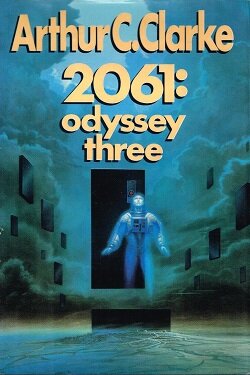 Cover of the novel 2061: Odyssey Three, where apologies appeared
Cover of the novel 2061: Odyssey Three, where apologies appearedThat, in fact, is the whole story. I draw your attention to the fact that all this happened already in the Chernenko era, and literally several months remained before perestroika, acceleration and publicity. And Clark’s novel was still published in Technique for Youth, and back in Soviet times, in 1989-1990.
I admit honestly - this story leaves me with a double, even triple impression.
Now it is already surprising how much the ideological confrontation meant then, if human destinies were broken because of such a trifle.
But at the same time - how much then our country meant on the planet. Today it’s hard for me to imagine a situation where a first-rate Western science fiction writer will devote a book to two Russians.
And, most importantly - how great then was the importance of knowledge in our country. Indeed, even in a revelatory note by the International Herald of the Tribunes, it was noted in passing that
“the Russians are one of the most devoted science fiction admirers in the world,” and the one and a half million circulation of the popular science magazine is the best proof of this.
Now, of course, everything has changed. In something for the better, in something for the worse.
It has changed so much that practically nothing remains of the world in which this story occurred. And in the brave new world, no one is interested in the dissidents who have done their job, or the journal Technika - Molodezhi, which is now being published in an insignificant circulation in state subsidies, and - most unfortunate - the space elevator.
Yuri Artsutanov died recently, on January 1, 2019, but no one noticed this. The only obituary was published in the newspaper Troitsky Variant a month later.
